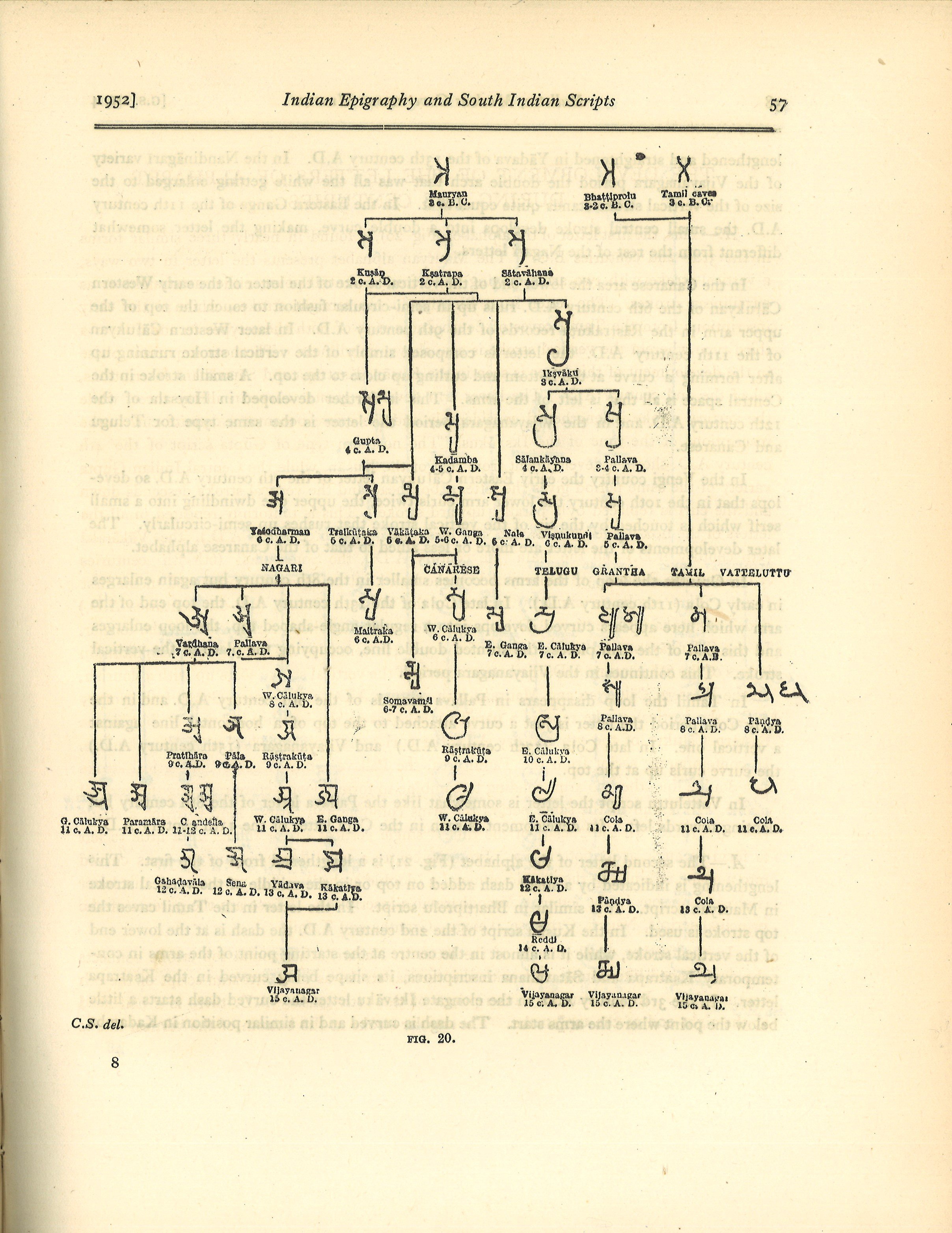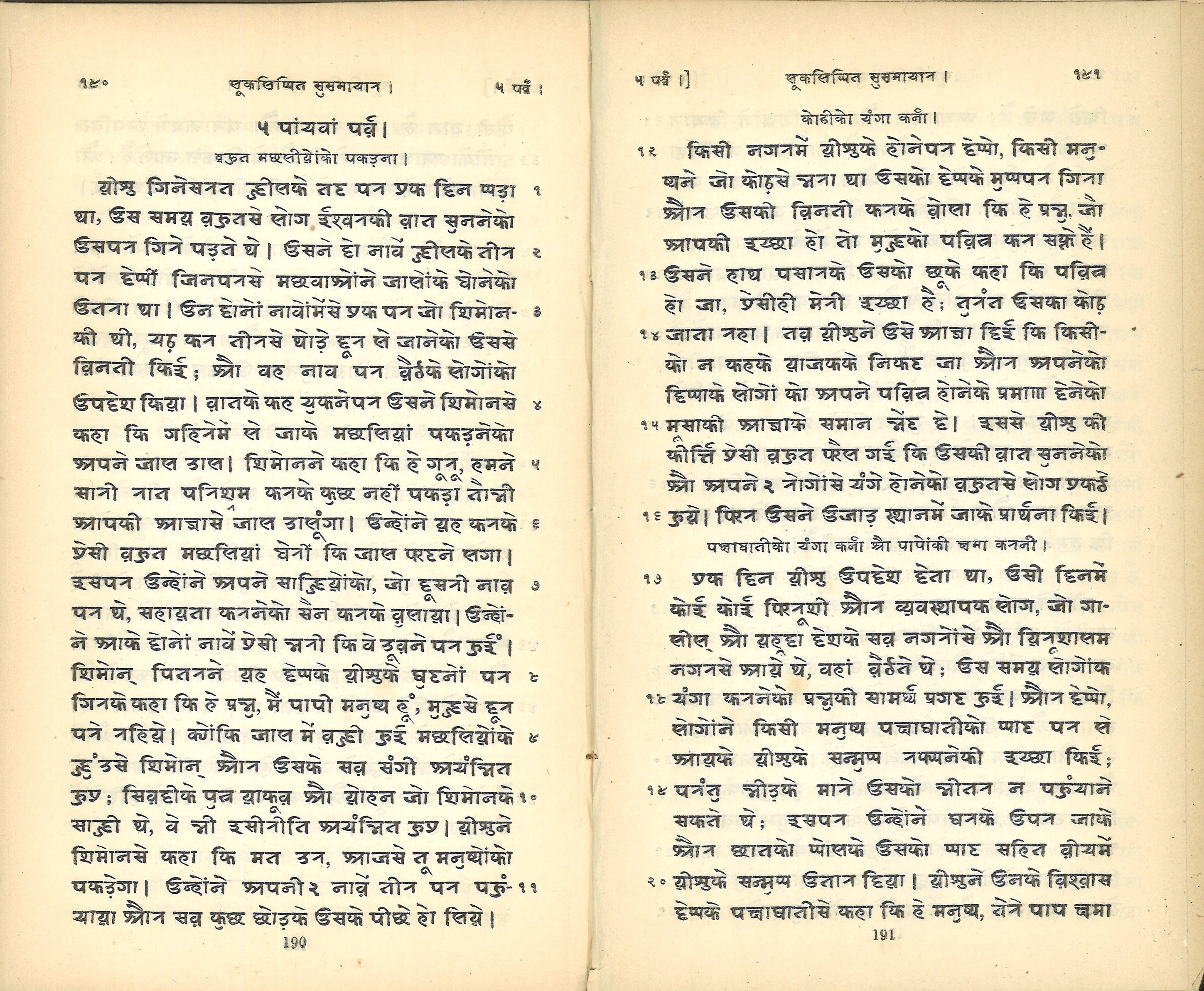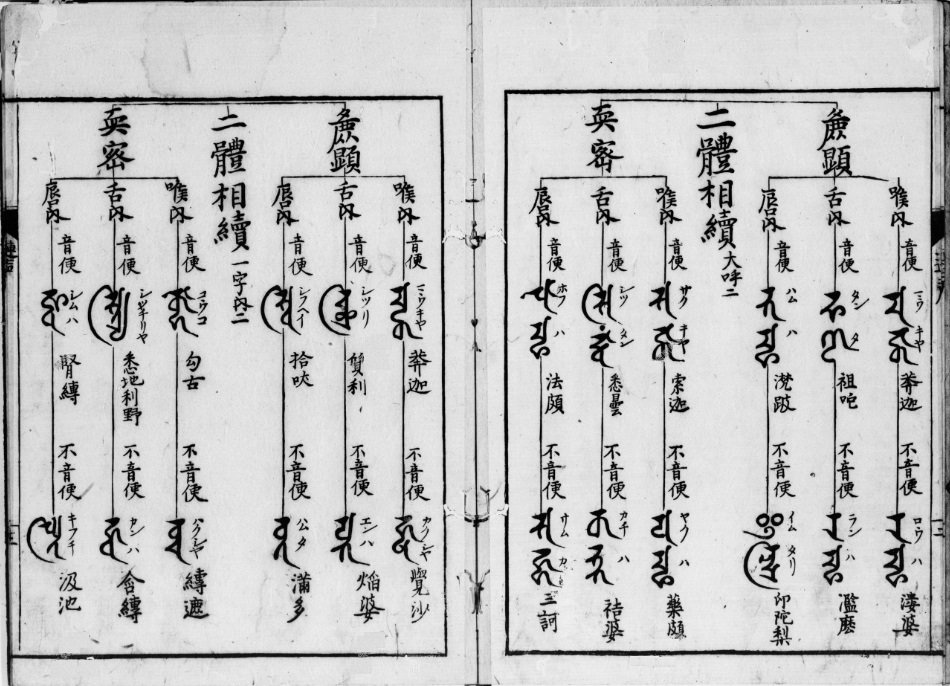Lineages and Encounters
C. Sivaramamurti, Madras: Government Press, 1952
This volume belongs to the Bulletin of the Madras Government Museum series. The author, C. Sivaramamurti, prepares in this volume a genealogical tree for each letter of the South Asian alphabet, illustrating the different stages in the development of South Asian scripts in general and south Indian scripts in particular. The page on the right side, for example, shows the changing form of the first letter of the alphabet.
The Brahmi script is ancestral to almost all South Asian writing systems. It can be traced back to the 8th or 7th century BCE. The well-known stone edicts of Ashoka dated from the 3rd century BCE were inscribed in this script (the letter to the most left on the top of the genealogical tree). Over the first millennium CE, the Brahmi script develops various regional variations which gradually form into more angular northern group and the more rounded southern group (showed in the bottom-left and bottom-right corners respectively). The southern Brahmic group has also heavily influenced the writing systems of Southeast Asia, indicating the close cultural connection between the two regions.
Calcutta: Baptist Mission Press, 1849
This bible is published by the Baptist Mission Press in 1849. The history of vernacular Bible publication dates back to the work of William Carey, one of the co-founders of the Baptist Mission in Serampore, in the early 19th century. The printing press set up by the Mission subsequently starts to publish Carey’s translation of the Bible into various South Asian languages as well as other translations that continue to appear throughout the 19th century.
Apart from the Perso-Arabic and the Devanagari scripts, many of these translations are also printed in Kaithi. Like Modi, Kaithi is a cursive script that looks similar to Devanagari. It enjoys great popularity in Bihar and Awadh even till the late 19th century. Kaithi is commonly used for writing legal, administrative, and commercial documents in the local dialects and is seldom used in religious scriptures in precolonial times. J. Chamberlain, a British missionary, however, proposes in 1810 that a Bible printed in Kaithi would be necessary for missionary works among the general mass of north India. The first Kaithi Gospels (Chamberlain’s Hindi translation) was printed by the Baptist Mission Press at Serampore in 1820.
Chōzen, printed in 1668
Shittan Renjōshū is a work on the rule of renjō (連声) or sandhi, i.e., a range of phonological changes that occur at morpheme or word boundaries, composed by Chōzen (澄禅, 1613-1680), an important Japanese monk of the early Edo period.
Siddham is a script, or rather a group of scripts developed in South Asia around the 5th century CE. The script receives its name from the practice of writing the word siddhaṃ, meaning ‘accomplished’ in Sanskrit, at the head of documents. The script reaches China as a script for writing Buddhist texts in around the 6th and 7th century CE and is later brought to Korea and Japan. The Japanese word shittan (悉曇) refers to the script but is also used to indicate the phonetic study of Sanskrit (shittanshō, 悉曇章). In his Shittan Renjōshū, Chōzen, as other shittan scholars before him, uses the Japanese katakana as well as kanji to mark the pronunciation of Sanskrit alphabets written in the Siddham script. Also note that individual Siddham letters are sometimes arranged vertically in the East Asian context, as they are in this book, because of the influence of Chinese and Japanese which are written vertically in this period.


